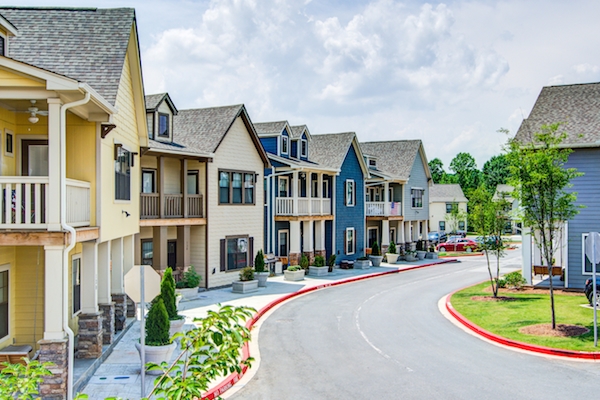
At its student-housing complexes, including this one in Clemson, SC, Aspen Heights cultivates a sense of community by building actual homes with intimate features such as front porches and curbside greenery.
In movies, college residences seem to be divided into two categories: bland, squashed, beige dorm rooms or elaborate, traditional, wood-paneled Greek houses. For most students, neither trope is correct, and for once, the truth is often much more pleasant than fiction. Among those at the forefront of student housing’s new normal is Aspen Heights, which has built townhouses in university communities across the country—including Columbia, MO; Charlotte, NC; and Clemson, SC, to name a few—that aren’t just hastily constructed boxes stacked atop one another.
The company designs units “where people who have left their homes can feel like they have a home again,” CEO Greg Henry says. Large bedrooms, closets, guest bathrooms, and kitchens outfitted with Sears appliances give the residences the feel of houses rather than apartments. Each complex is different, featuring such amenities as clubhouses, cardio and weightlifting gyms, movie theaters, tanning beds, and waterfall-filtered pools that transform them from places to rent into places to live, play, and study.
High-end living for students has sparked enough debate among academic and community critics that a 2013 New York Times article outlining the industry phenomenon boldly proclaimed in its headline, “In Student Housing, Luxuries Overshadow Studying.” Henry was one of several professionals on the development end who argued that this was not so, explaining that a relaxing home environment helps students rather than distracts them.
